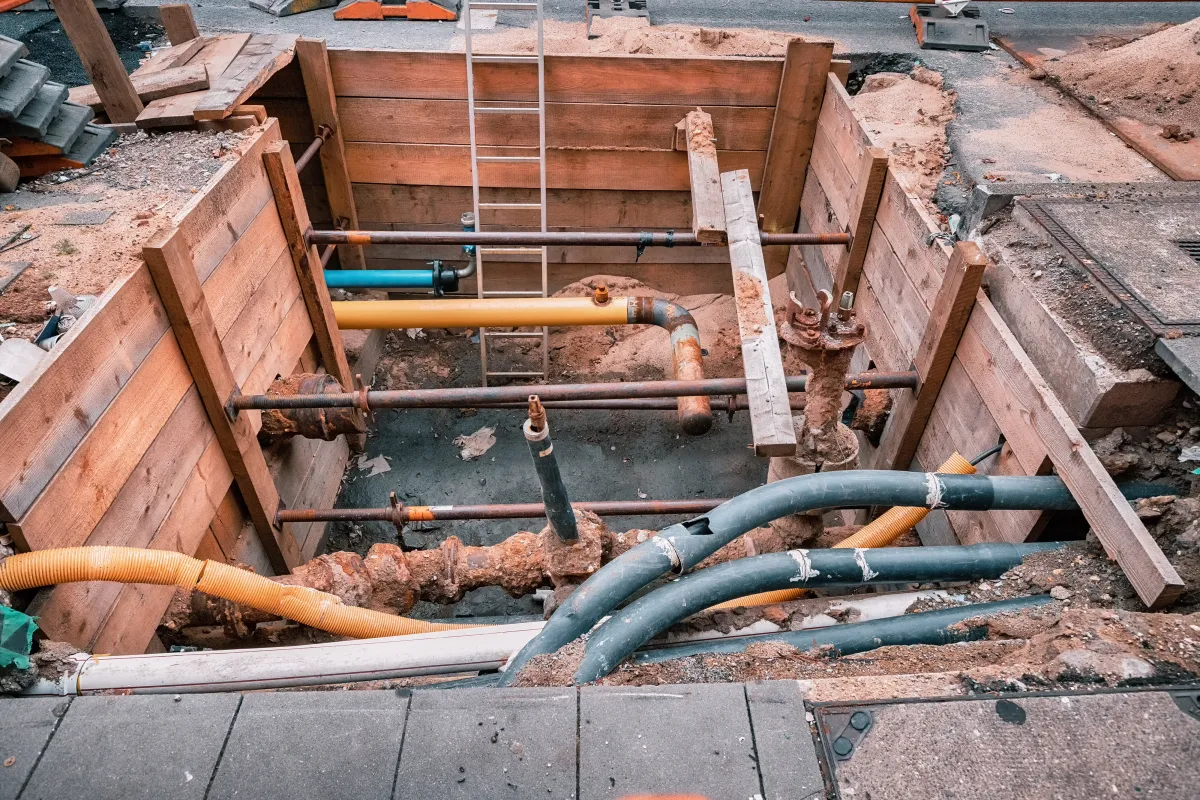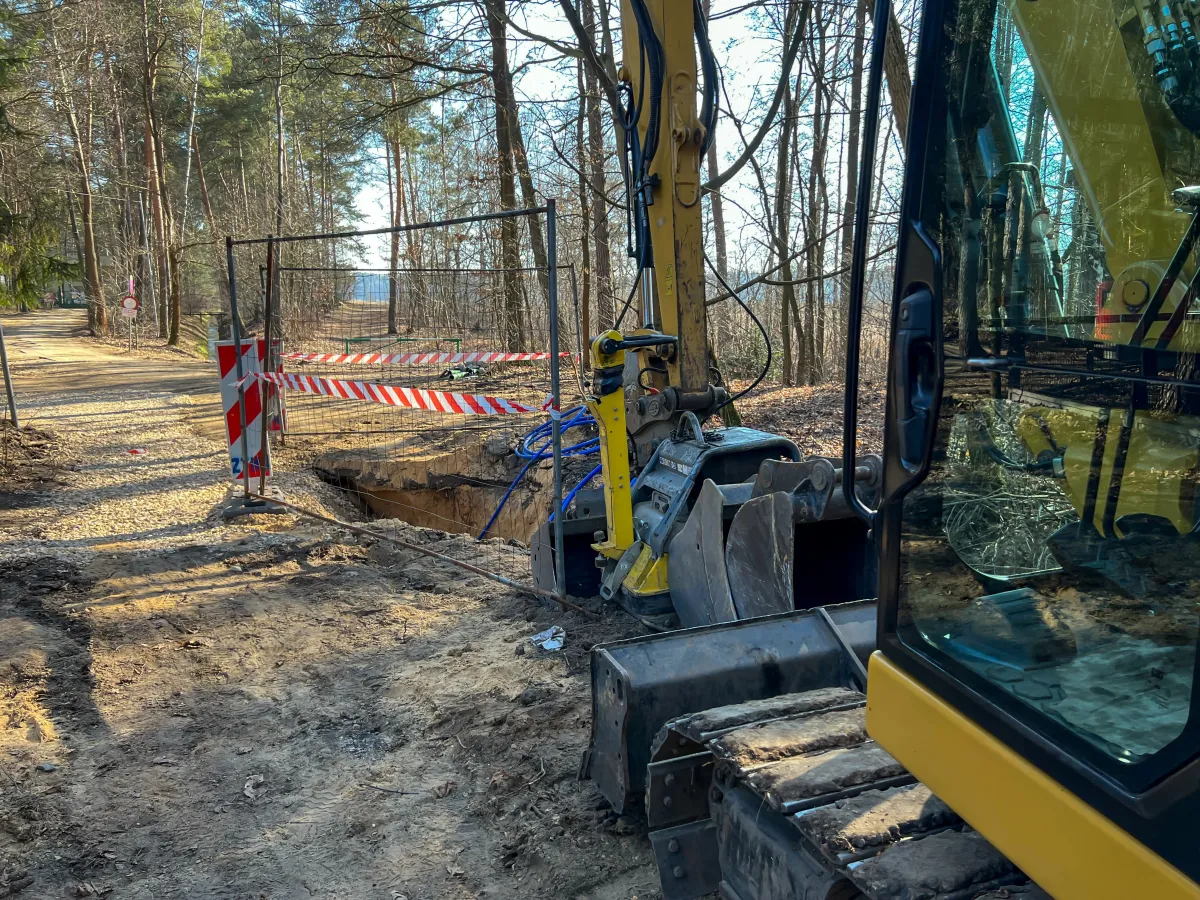Daylighting/Potholing Services In WI, MN, IA
Why Daylighting/Potholing Services Is the Smart First Step on Any Job
If your project involves digging anywhere near existing utilities, daylighting isn’t optional—it’s essential. Daylighting/Potholing services is the process of safely exposing underground lines using non-destructive methods like hydro excavation. It helps you visually confirm what’s below the surface before moving forward with mechanical digging, trenching, or installation work.
Whether you're working on new construction, utility repairs, or infrastructure upgrades, daylighting helps prevent service outages, equipment damage, and costly delays. A few inches in the wrong direction with a backhoe can mean hitting a gas line, water main, or fiber optic cable. Daylighting reduces that risk by using pressurized water and vacuum systems to gently remove soil until the buried utility is fully exposed.
This page explains when and why daylighting is used, what to expect from a skilled crew, and how it helps protect your budget and your schedule. If you're planning a dig in an unknown area or dealing with old infrastructure, daylighting is your best insurance policy before you break ground.
How Can We Help?

Betts Utility Contractors LLC is Committed to superior quality and results!

AVOID COSTLY MISTAKES:
Do NOT hire an excavating contractor without first reading our free guide:
The ULTIMATE Excavation & Septic "Success Guide."


What Daylighting/Potholing Services Is—and Why It Matters
Daylighting is the practice of uncovering underground utilities without damaging them. Instead of relying solely on outdated maps or locator tools, this method gives you visual confirmation of what’s beneath the surface. It’s the safest way to verify the location and depth of pipes, cables, and conduits before heavier excavation begins.
This service is most commonly used during utility work, road construction, infrastructure upgrades, and new site development. It plays a critical role in preventing service interruptions, fines, and safety incidents. On high-risk sites or where the exact layout is unclear, daylighting can save time and prevent expensive mistakes.
When You Shouldn’t Skip This Step
If you’re digging anywhere near known or suspected utilities, daylighting should be part of your plan. It’s a small investment up front that can prevent major problems down the line.
Common Applications for Daylighting
Confirming Utility Depth Before Trenching
Contractors use daylighting to visually confirm the depth of lines before using trenchers or backhoes. It gives them the green light to proceed—or the warning they need to adjust.
Verifying Line Locations in Congested Corridors
Urban sites and industrial areas often have multiple utilities layered close together. Daylighting lets crews work with certainty in even the tightest spaces.
Clearing Unmarked or Poorly Documented Infrastructure
Older properties and rural areas often lack reliable records. Daylighting helps crews avoid surprises by locating undocumented lines before digging begins.
Supporting Work Across Sectors
Municipal Projects and Public Utilities
Cities use daylighting to protect essential services like water, gas, and electrical infrastructure. It helps keep projects on schedule and in compliance with regulations.
Private Developments and Commercial Builds
Builders rely on daylighting to avoid hitting utilities during site prep. It’s especially valuable during early excavation and grading work when accuracy is critical.
Emergency Utility Work and Repairs
In fast-paced repair scenarios, daylighting provides quick, targeted exposure of the affected line. Crews can dig with confidence, even when working under pressure.
See Our Excavation & Hydrovac

✔️ Utilities Trenching
✔️ Trenching
✔️ Hydro Excavation
✔️ Daylighting/Potholing Services
Quality Services Launched FAST!

✔️ Hydrovac Services
✔️ Remote Hose Excavation
✔️ Utility Pole Hole Digging
✔️ Catch Basin Cleaning
What Are You Waiting For?
What to Look for in a Daylighting/Potholing Services Contractor
Why Skill and Precision Matter
Daylighting isn’t a task you want rushed or left to guesswork. A skilled crew will know how to dig with care, read utility markings accurately, and adjust for unexpected conditions. When the job is done right, you get a clean, exposed line without damage, delays, or disruption.
The Best Crews Don’t Just Dig—They Think
From checking locator markings to monitoring soil movement, experienced daylighting crews are proactive. They anticipate challenges before they happen and communicate with your team to stay aligned every step of the way. That kind of foresight is what keeps your job running smoothly.
Bad Work Leaves a Mess Behind
Sloppy daylighting can leave utilities partially exposed, the work zone cluttered, or damage that no one notices until it’s too late. Clean, precise results speak for themselves.
Traits of a Quality Daylighting Team
They’re Focused on Accuracy, Not Speed
The best crews prioritize exposing the utility fully and clearly. They understand that cutting corners leads to mistakes, and take the time to get it right the first time.
They’re Comfortable Around Live Infrastructure
Daylighting often happens inches away from critical systems. A good team stays calm, deliberate, and alert—treating the surrounding utilities with the respect they deserve.
They Keep Communication Clear and Constant
You’ll never be left wondering what’s going on. Professional daylighting contractors talk through each phase, so everyone on site stays on the same page.
Matching Experience to Site Conditions
High-Traffic Municipal Areas
Crews working near roads, sidewalks, or utility corridors need to manage traffic, safety, and timelines. These jobs demand experience, coordination, and speed without sacrificing care.
Private Construction and Development Sites
Contractors on residential or commercial builds benefit from crews who can quickly identify risks. These teams help avoid service disruptions that slow down the rest of the job.
Emergency Response Scenarios
When water, power, or gas is out, there's no time for hesitation. Emergency daylighting crews are trained to respond fast, stay focused, and expose critical infrastructure safely—no matter the conditions.
Hours: 8-5 M-F
Extended hours by appointment only.
Address: Sparta, WI 54656
